Ashdod
Today we’re taking a closer look at Ashdod, Israel’s sixth-largest city, which sits on the Mediterranean and - whilst not one of the country’s obvious tourist attractions - has plenty to offer the visitor. Ashdod is the largest port in the county - indeed, it accounts for 60% of the country’s imports.
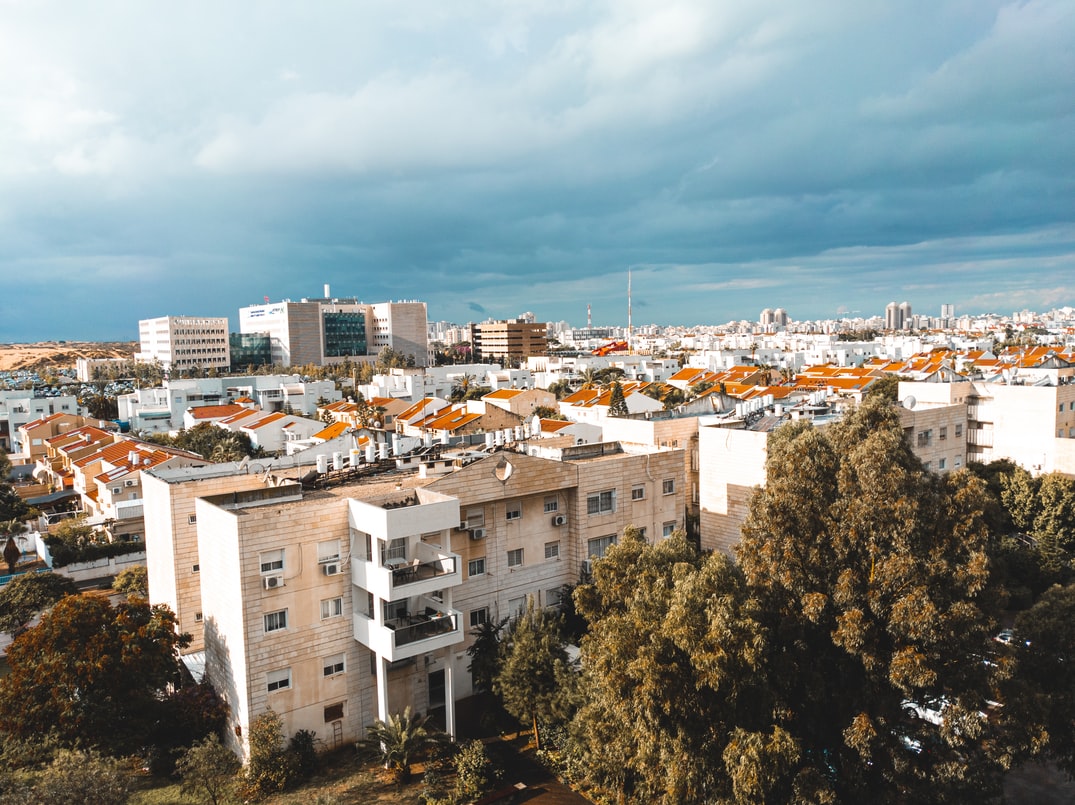
Winter day in Ashdod, Israel. Photo by Max Simonov on Unsplash
Where is Ashdod?
Ashdod is located on the Mediterranean coast, in the southern district of the country, just 32 kilometers south of Tel Aviv and 20 km north of Ashkelon. With a population of around 221,000, whilst it does not have any world-class museums or galleries, it can offer the visitor a large marina with restaurants and cafes, green open spaces in which to walk, museums and archaeological attractions, and - perhaps best of all - long stretches of pristine Israeli beaches.
Ashdod in the Bible
Ashdod is a biblical name meaning ‘inclination',’ diffusion’ or ‘theft’. It is mentioned thirteen different times in the Hebrew Bible, which tells of it being a member of the Philistine pentapolis (the ‘five cities’). According to the Book of Joshua, in the Hebrew Bible, it was also part of the tribe of Judah.
In the first Book of Samuel, Ashdod is once again mentioned as being among the principal Philistine cities. Indeed, after they captured the Ark of the covenant from the Israelites, the Philistines took it to Ashdod and set it down in the temple of Dagon. (The God ‘Dagon’ was the legendary inventor of the plow).
Geography and Climate of Ashdod
Ashdod lies on Israel’s coastal plain, next to the sea, and is a very flat city. It has a typical Mediterranean climate - because it is on the coast, its summers are long, hot, and very sticky. In contrast, winters are cool (with not too much rain) and many clear days. Temperatures in the summer can soar to well over 35 degrees and in the winter (January being the coldest month) fall to 12 degrees at night.
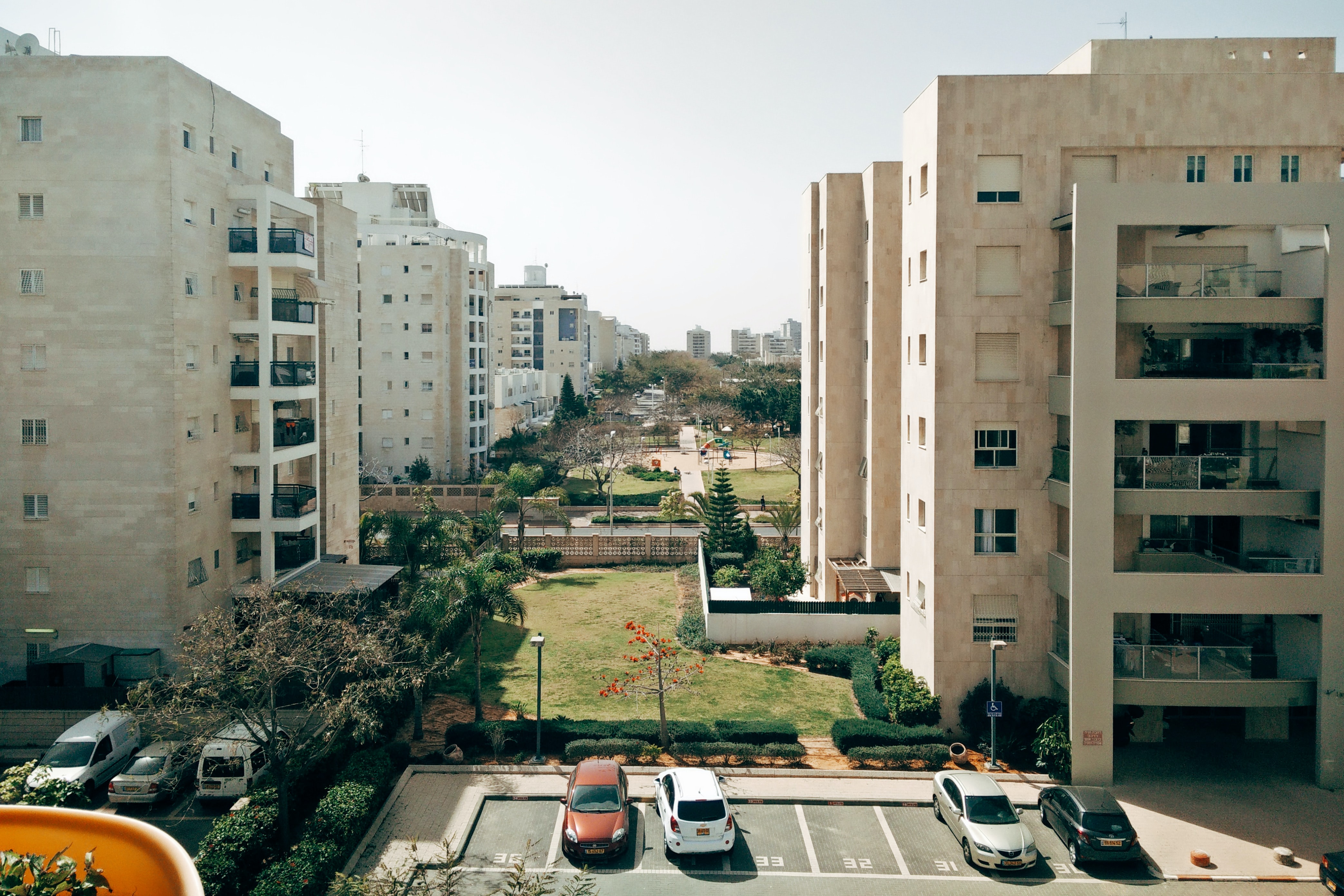
Ashdod bedroom suburb. Photo by Oleksandr Koval on Unsplash
Ashdod in Ancient Times
The first documented urban settlement at Ashdod dates back to the Canaanite culture of the 17th century BCE. In 8 CE, the city fell to King Uzziah but was then captured by Assyria. In Hellenistic times, the city was known as Azotus, in Byzantine times it was under the control of Bishops.
The ancient Ashdod, underneath the mound (‘tel’) had outports as Ashdod Yam and a Crusader castle. By the 1960s and 1970s, archaeologists from Israel and the USA had excavated remains in Ashdod dating back to the Canaanite period, as mentioned above.
Ashdod Today
Modern Ashdod was founded in 1956, along the Lakhish stream estuary, It was always intended to be a port city, because of its position on the Mediterranean and the fact that it rests on flat land, at a strategic economic crossroads. Today, it exports the majority of Israel’s citrus fruits as well as diamonds (and other precious stones), chemical products, and computer equipment.
Ashdod is also a port at which many cruise ships from around Europe dock. Because it is so close to both Tel Aviv and Jerusalem, booking a cruise excursion is an excellent way to spend a day in Israel.
Whether you want to head to Israel’s capital, wander in the Old City, explore historical sites and places of worship, or travel to Tel Aviv and enjoy some Bauhaus architecture, boutique shopping, or a trip to Jaffa’s famous port and flea market, a private ship-to-shore tour from Ashdod port is a perfect way to manage it.
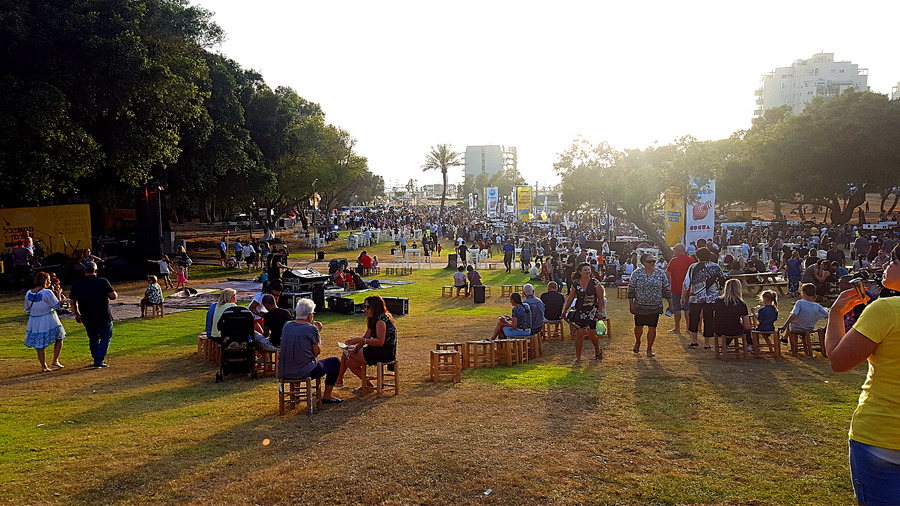
The Ashdod Festival of the Nations and Their Tastes, Israel. Photo credit: © Oksana Mats
Attractions in Ashdod
Ashdod is not a particularly large city and it’s easy to walk around, hail a cab, or use the public transport system. Here are a few of the attractions we’d recommend you seek out if you’re in the city:
1. The Marina - the Ashdod Marina is close to the city center and close to the ‘beach zone’ of the city. Known as the ‘Blue Marina’ its mooring basin is in the shape of a circle, with the dock stretching out like an arm. The dock itself looks like a menorah (a Jewish seven-branched candelabra) with three ‘finger docks’ to each side.
It has berths that can accommodate up to 550 yachts and small boats and is a popular place to stroll. There are many restaurants and cafes in the neighborhood and the area is regenerating constantly. It is an excellent place to have a fish lunch or dinner, and if you are keen on water sports, in Ashdod there are schools for diving, surfing, and sailing dotted around the area.
2. Ashdod Yam Park - this 50-acre flagship project is a beautiful place to walk and makes for some very family-friendly outdoor fun. They have a carp pond and an excellent playground, and there’s even a huge skate park, for those who love their boards! This is a lovely park to walk in on summer evenings, especially as the sun goes down.
3. Ashdod Museum of Art - located close to the city center, this museum has been open for 15 years now and places its focus on issues that relate to the nature and identity of Ashdod. Many of the exhibitions put on in the last few years have looked in-depth at contemporary Israeli culture and feature artworks both by modern and veteran artists, both Israeli and from across the globe.

A ship dragged anchor at Ashdod, Israel. Photo by Felix Tchverkin on Unsplash
4. Lachish River Park - this 650-acre park t stretches along the southern bank of Nahal Lachish River, which is the green lung of Ashdod. You can stroll along the river that divides the city and beaches from the port - lookout for kingfishers! Inside the mini zoo, halfway up on the right, you can see ostriches, goats, zebras, and turtles. In the summer, children will love the trampolines, bumper cars, and inflatable cars, as well as a play area and pool.5. Museum of Philistine Culture - the Corinne Mamane Museum of Philistine Culture is the only archeology museum in Israel (and, indeed, the world) dedicated solely to the Philistine culture, ancient culture in the Canaanite cities, Ashdod being one of them. It’s fairly small, and can be explored in about 2 hours - there are interactive stations to encourage children to get excited and one actually includes getting dressed up in ancient costumes! Others have videos and one has an interactive display of Samson pulling down some pillars! Admission is 30 NIS.
6. The Eye of the Sun - this modern sculpture sits in a large circle at the end of Ashdod’s promenade. Designed by Motti Mizrachi, it changes color at night.
7. Bet Guvrin-Maresha National Park - not far from Ashdod, this is a huge archaeological complex that contains the remains of two ancient cities. It contains the Maresha caves that date back 2,000 years, to the time of Bar Kochba, as well as a reconstructed ancient wine and olive press and the northern complex.
The northern complex boasts significant remains from the Roman period (both a bathhouse and impressive amphitheater), as well as the remains of a Crusader fortress with a church, dining room, workshops, and underground vaults. The caves are fascinating and there are many of them but are probably not suitable for children under the age of 5.
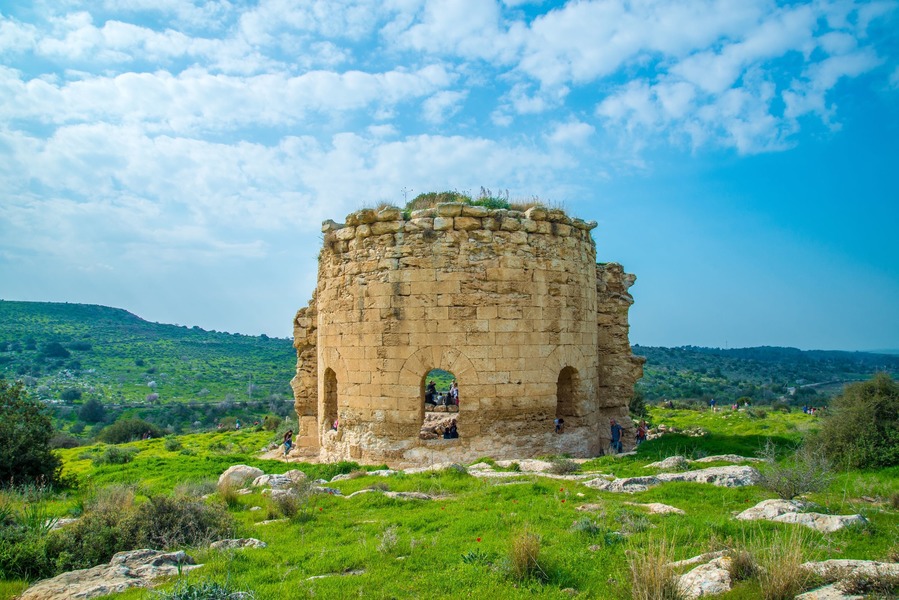
Beit Guvrin Archaeological Park. Photo credit: © Manu Grinspan. Published with permission of the Israel Nature and Parks Authority
Music, Art, and Culture in Ashdod
If you’re in Ashdod, try and grab a ticket for a performance by the Israeli Andalusian Orchestra in Ashdod - founded in 1994, this orchestra endeavors to act as a cultural bridge between Israel and the Arab world. It performs pieces that were created during the Golden Age of Jewish Culture in Spain.
Ashdod also has its own Symphony Orchestra and holds dance festivals from time to time. Ashdod’s Méditerranée Festival, held annually, showcases the best artists from Israel and well-known guests from the Mediterranean countries. During the festival days various shows are held, film screenings, and culinary events from the best Mediterranean cuisine. The festival’s events are held at various sites across the city.
Getting to Ashdod from Tel Aviv
Ashdod is well connected with Tel Aviv, the bustling economic center of Israel, with its hipster bars, innovative food scene, antique markets, and non-stop nightlife. There are a few ways you can travel between the two cities, including:
1. Two buses that will take you from Ashdod to Tel Aviv. The first is bus number 320, which leaves Ashdod Central Bus Station every 20-30 minutes and takes approximately 50 minutes, dropping you at the Tel Aviv Central Bus Station (Levinsky) in the south of the city.
The second bus is number 626, which leaves from Ashdod al Halom and takes approximately one hour, dropping you at the Savidor bus station (on Arlozorov Street), in the north of the city. You can buy a ticket online beforehand online, use a green Rav Kav card (with preloaded credit) or simply pay the bus driver with cash when you board. A one-way ticket would cost around 14 NIS.
Israeli train. Photo by John Adeoye on Unsplash
2. Train - these run hourly from Ashdod to Tel Aviv and the fastest will take 45 minutes. You leave from Ashdod al Halom and alight at one of Tel Aviv’s three railway stations - HaHaganah, HaShalom, or Savidor. A one-way ticket should cost around 18 NIS.3. You can hire a car. Car rental in Israel is relatively simple and all you need is your international driving license and a credit card - there are many companies that can help you including Eldan, Shlomo Sixt, and Budget. The cost is relatively cheap (compared to other countries in Europe or the US), all of the representatives speak good English and if you shop around online, a day or two before, you may be able to pick up a real bargain.
4. Taxi - take a taxi or even book a private transfer if you wish to make the trip by road. Taxis in Israel can be pre-booked with a hotel concierge or with the Gett app. It is better to agree on a price beforehand for this kind of trip, so there are no nasty surprises involved at the end of the ride. For private transfers, please contact us at Bein Harim - we will be delighted to arrange this service for you.
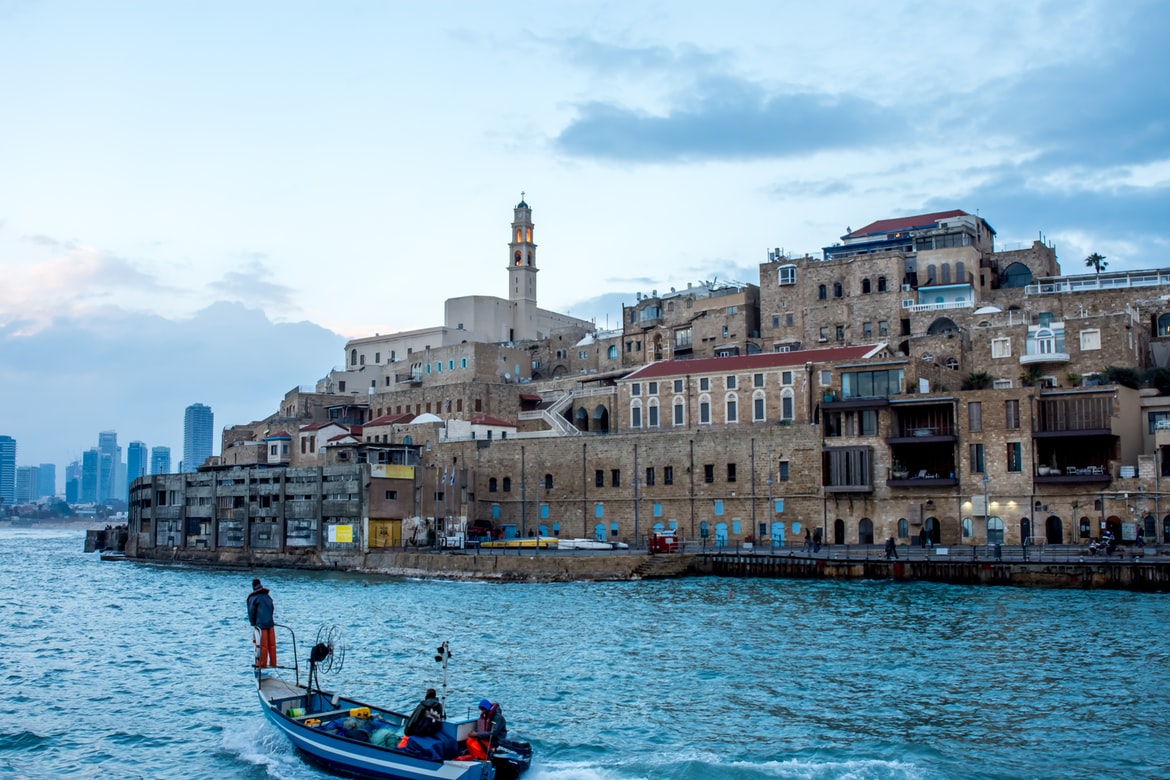
Jaffa port, Israel. Photo by Faruk Kaymak on Unsplash
Getting from Ashdod to Jerusalem
Jerusalem is also within easy reach of Ashdod. Bus number 448 leaves Ashdod Central Station regularly (every 30 minutes or so) and the journey takes approximately 1 hour and 10 minutes. You will arrive at the Jerusalem Central Bus Station, which sits directly on Jaffa Road, and from there you can easily continue onto all of the major attractions, including the Old City, using the Jerusalem light railway. A one-way ticket from Ashdod to Jerusalem should cost around 20 NIS and - again - you can use a Rav Kav card or simply pay the driver in cash when you board.
It is possible to travel between Ashdod and Jerusalem by train, but not directly. You will have to change in Tel Aviv, at HaHaganah station, and then continue on and the journey time will be around 1 hour 40 minutes. Both stations are modern and have English signs (and electronic self-service machines, with a variety of instructional languages) and elevators, should you have heavy luggage! A one-way ticket from Ashdod to Jerusalem should cost around 25 NIS.
Driving between the two cities, either using a hire car, a taxi, or a private transfer, should take you around just over one hour, using Route 1, providing there is no traffic.
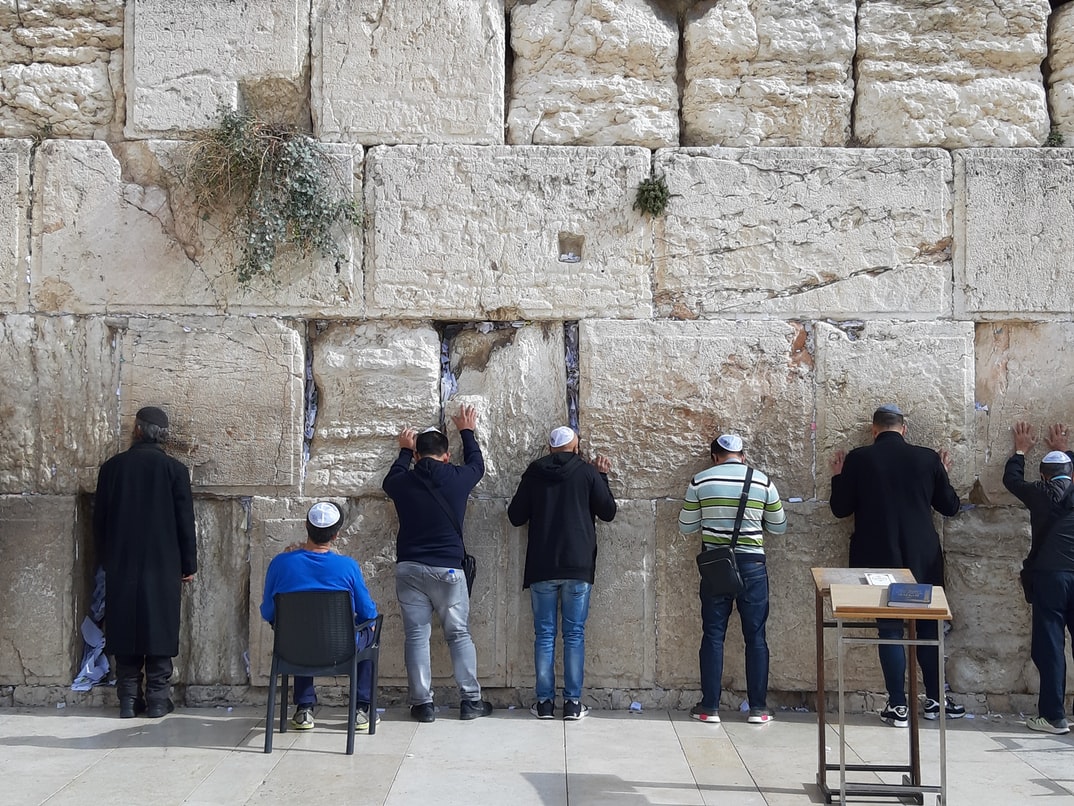
The Wailing Wall, Jerusalem. Photo by Thomas Vogel on Unsplash
 Login / Register
Login / Register
 Contact Us
Contact Us
 Certificate of Excellence
Certificate of Excellence Guaranteed Departure
Guaranteed Departure Low Prices Guaranteed
Low Prices Guaranteed 24/7 Support
24/7 Support




